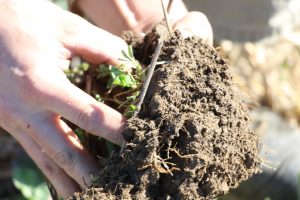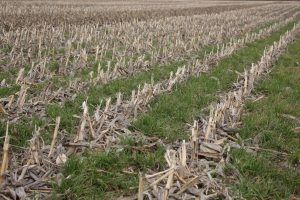Agronomy, Conservation, Homepage Slider, Water Quality
Building Soil Carbon
By James Hoorman, Hoorman Soil Health Services
Most of our agricultural soils are lacking adequate levels of organic matter and good soil health to obtain optimal yields. The lack of humic substances and healthy soil biology reduces the soil’s water holding capacity and the ability to release nutrients when the plants need them, leading to reduced crop quality and lower yields. Now that some carbon markets are paying farmers to store carbon, here are some ways to get paid to store soil carbon with added crop and soil benefits.
Understanding the carbon cycle is the first step to effectively building soil organic matter. There are three main ways to increase a soil’s carbon content: carbon imports, carbon generation, and carbon induction. From an agricultural perspective, all three methods of carbon generation are great for agricultural production.
Importing Carbon: There are three primary carbon imports: humates, biochar and compost. Humates such as fulvic and humic acids can be added to a soil and generally provide good nutrient exchange. Biochar is charcoal that is produced when oxygen is limiting during burning. Biochar is a stable carbon import but not quite as active as humates. Compost is a carbon import with a strong biological component (high in beneficial microbes) that greatly improves soil health. Compost does have a lower level of stable humic substances and can degrade over a period of a few years, diminishing carbon soil storage over time. Each method provides soil-building components: compost provides biological inoculum while humates provide biological plant growth stimulants.
Carbon Generation: Farmers have several opportunities to generate or capture carbon on the farm that could otherwise be lost. Managing crop residues, reducing tillage, composting crop waste and animal manure, and cover cropping all provide farmers with a chance to capture and store more soil carbon.

Any of these practices will help build a robust healthy soil system that increases the recycling of plant available nutrients.
Carbon Induction: Induction may have the greatest possibly for generating higher levels of soil carbon by optimizing the carbon cycle through improved plant performance. Carbon induction builds large amounts of stable humic substances, stimulates biology, and improves soil and plant health. Improving plant genetics, changing plant spacing, intercropping, and keeping the soil covered with many different species of plants by increasing soil health improves carbon storage through carbon inducti